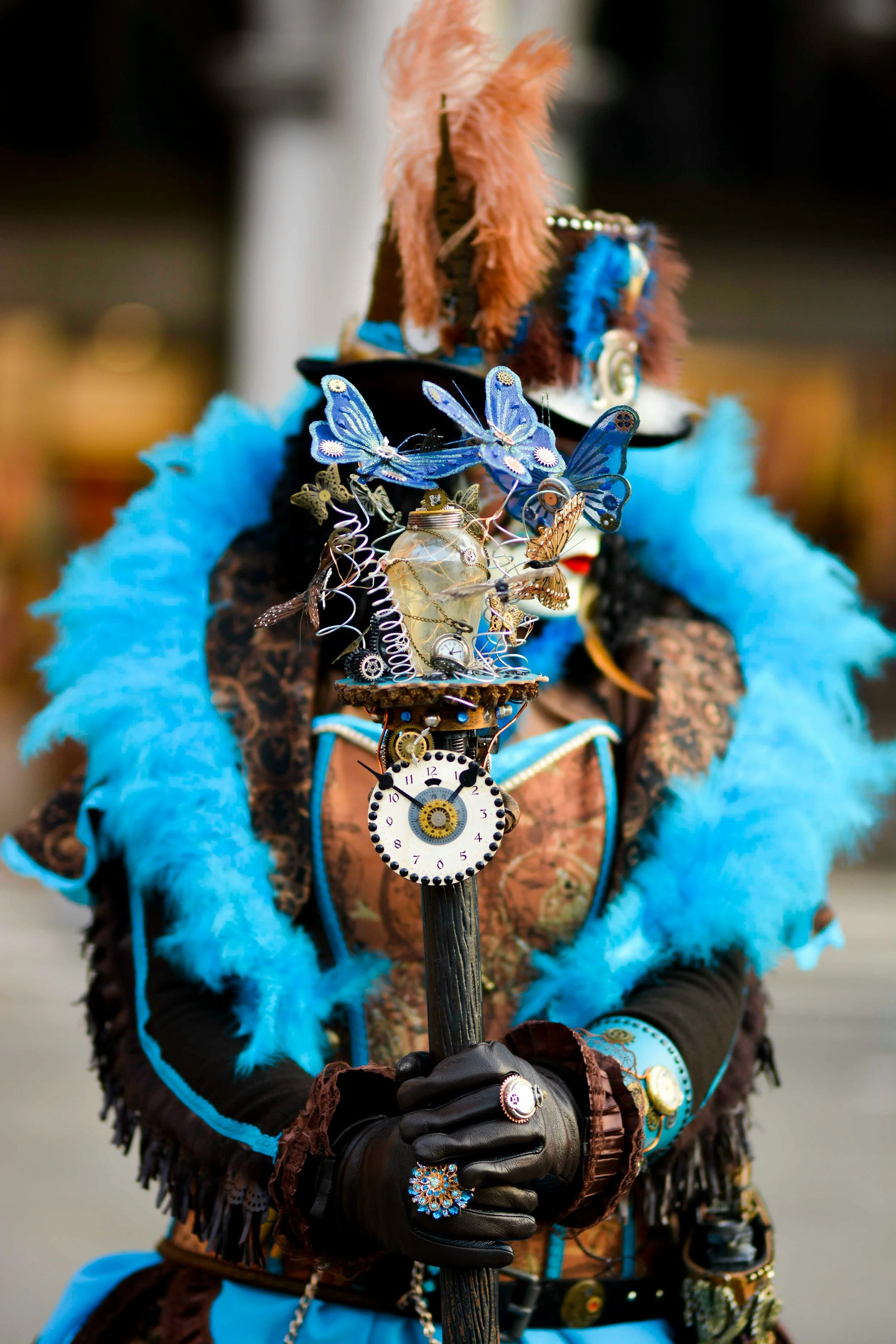The Power of Color in Brand Identity
Photo by Unsplash
When working on a new brand identity, one of the most critical decisions you can make is choosing the right colors. Colors are more than just visual elements—they are powerful tools that can convey your brand's values, evoke emotions, and create lasting impressions.
I remember a trip to Italy where I was mesmerized by the vibrant colors of the Carnevale di Venezia. The streets and canals were filled with people in stunningly colorful masks and costumes, each hue telling a story of tradition, celebration, and artistry. Each shade carefully chosen to reflect joy, elegance, and history.
Colors carry different meanings and significance across various cultures and contexts. For instance, red can range from symbolizing empowerment and confidence in one region to representing action and activism in another. This diversity underscores the importance of thoughtfully selecting colors that resonate with your target audience and align with your brand’s core values.
Here are a few reasons why choosing the right colors is paramount:
1. Emotional Connection
Colors evoke specific emotions and feelings. For a corporate rebranding project for a global chemical company I was working for, blue was chosen to symbolize credibility, accessibility, and expertise. Orange, known for its optimism and uplifting nature, was selected to embody passion, entrepreneurship, and innovation. Green, the color of harmony and balance, was used to represent sustainability and corporate responsibility, reflecting growth and hope.
2. Cultural Relevance
Understanding the cultural context of your color choices ensures that your brand resonates with local audiences. What works in one market might not be effective in another. Research and sensitivity to cultural differences are essential for global brands. For example, in Europe, white is often associated with purity, peace, and weddings, symbolizing new beginnings and positivity. However, in many Asian cultures, particularly in China and India, white is traditionally associated with mourning and funerals, symbolizing death and loss. This contrast underscores the importance of understanding cultural perceptions when choosing colors for a global brand.
3. Brand Recognition
Consistent use of color helps in establishing brand recognition. Think of iconic brands like Coca-Cola with its signature red or Tiffany & Co. with its distinctive blue. These colors become synonymous with the brand and enhance recall. I often tell the story of Milka chocolate and its iconic purple cow. The unique shade of purple used in its branding has become synonymous with the brand itself. Over time, this distinctive color has made Milka products instantly recognizable in crowded marketplaces, demonstrating the power of a well-chosen color in building strong brand identity and customer recognition.
4. Value Alignment
Your brand colors should reflect your company’s values and mission. If sustainability is at the heart of your brand, shades of green can symbolize your commitment to the environment. If innovation is key, bold and dynamic colors might be more appropriate.
5. Differentiation
In a crowded marketplace, the right colors can set your brand apart from competitors. Unique and strategically chosen colors can create a visual identity that stands out and attracts attention. One notable boutique hotel in Europe known for its distinctive use of color is the Galleria Vik Milano in Milan, Italy. This hotel is celebrated for its vibrant and artistic interiors, featuring a variety of bold colors and unique artworks that create a memorable and visually striking experience for guests.
Conclusion
Choosing the right colors for your brand identity is not just an aesthetic decision—it's a strategic one. By carefully selecting colors that align with your brand values, resonate with your target audience, and differentiate you from the competition, you build a strong and memorable brand presence.
Next time you embark on creating or refreshing your brand identity, remember: color is more than what meets the eye. It's a language that speaks volumes about who you are and what you stand for. And, as my journey has shown, the right colors can transform not only a brand but also the experiences and emotions of those who engage with it.
And you, what colors have you found most impactful in your own branding project or in brands you admire? I am curious to hear!
#BrandIdentity #ColorPsychology #Branding #MarketingStrategy #GraphicDesign #VisualBranding #DesignInspiration #BrandColors #MarketingTips #CreativeDesign #BrandStrategy #ColorTheory #BrandRecognition


